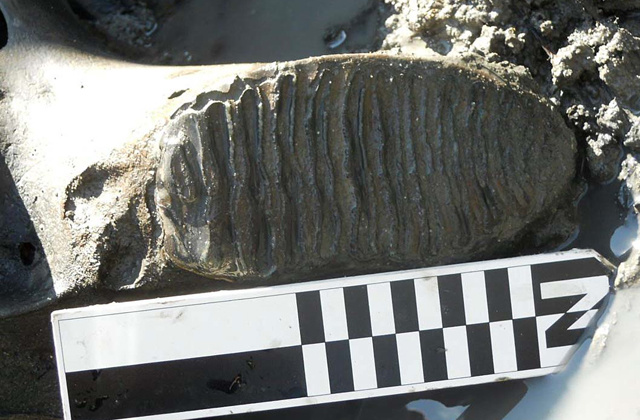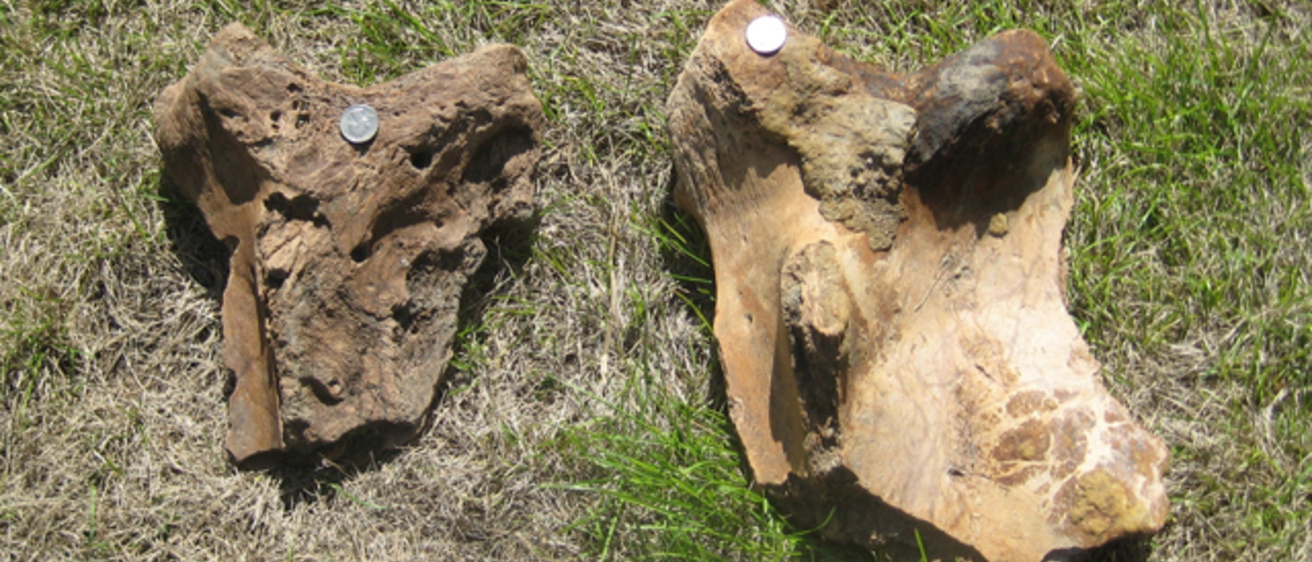A team led by the University of Iowa has unearthed some remains of a second mammoth, a rarity for a single site located in the Midwest, scientists associated with the dig announced Friday.
The paleontologists working at a farm near Oskaloosa last weekend discovered a right mammoth scapula, the second such bone found at the site, confirming the existence of another mammoth. The team also uncovered a section of skull and an intact, embedded tooth that may belong to either mammoth or perhaps be associated with a third individual. In all, the researchers have dug up more than 50 bones, including ribs, vertebrae, and leg bones.
Whether the two mammoths are the same species and whether they lived, and died, in the same spot at the same time will need to await for chemical testing on the specimens.
“The confirmation of a second mammoth at the site just adds to our excitement about the possible research that can be done here, with new questions to be answered on the environment these animals lived and died in and what drew the animals to this location,” says Sarah Horgen, education coordinator at the UI Museum of Natural History who is leading the excavation.
The dig began in April, about three years after a local farmer stumbled upon what looked to be a massive bone sticking out of an eroded riverbank. What he discovered was an approximately 4-foot-long femur that belonged to a mammoth that called Iowa home at least 10,000 years ago. The farmer, who does not want his name publicized nor the location of the dig to be identified, approached the UI Museum of Natural History to help excavate the area and was pleased to gain the expertise of UI scientists in exchange for the chance to do research on the specimen and analysis of the environment in which the animal lived.

At the site last weekend, the scientists turned up a second right scapula, slightly smaller than the first.
Holmes Semken, emeritus professor of geoscience at the UI, recognized the two scapulae as being the same side but referred them to Chris Widga, an expert on fossil mammoths at the Illinois State Museum, for confirmation. Widga responded: “They look like they are same side, different sizes. You have two critters!”
A discovery of a pair of mammoths in the same spot is rare, Widga says. “I believe there are only eight to 10 localities in our Midwest database that have more than a single animal,” he says.
On Monday, less than a day after the second mammoth was confirmed, the researchers found a section of skull and an intact, embedded tooth.
“The discovery of the tooth significantly adds to the research potential of this site, especially getting an actual date on the animal and the age of the individual,” Horgen says.
Just as important to the researchers is a tree stump rooted in the same layer of sediment as the partial skull and tooth.
“The stump is an important part of deciphering the site’s history,” says Art Bettis, associate professor of geoscience and academic coordinator of the Environmental Sciences Program at the UI. “It appears to be rooted in place so obtaining a radiocarbon date from it will provide a minimum age for the sediment it is rooted in (and that one of the mammoth bones is buried in) and a maximum age for the sediment that buried the stump. Also, the stump and other fossil plant remains collected from the site will inform us about the environment at the time the mammoths were living in the area.”
"It’s becoming increasingly clear that the geology of the site is a lot more complex than we originally thought. It has been a very active valley for at least 10,000 years and the bones have been moved around by more than one flood,” says David Brenzel of Indian Creek Nature Center, one of the project leaders. That complexity may mean the excavation takes longer than the organizers expected, but the happy tradeoff is that it could well increase the site’s scientific importance. The museum and the many volunteers involved in the project are looking forward to continued excavation opportunities and to learning more about these mammoths and their environment.
The UI-led excavation has involved partnerships with various institutions and local organizations, including William Penn University in Oskaloosa, Iowa State University, the Office of the State Archaeologist, and the Cedar Valley Rock and Mineral Society. High school teachers, students, and residents also have participated in the dig.
“This excavation is providing an incredible opportunity for environmental research and interdisciplinary collaborations across the university and beyond, as well as a one-of-a-kind, hands-on educational and outreach opportunity that can be extended to Iowans of all ages,” Horgen notes.
